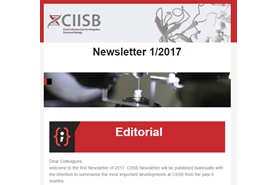10 Jul 2023
Solid-state NMR molecular snapshots of Aspergillus fumigatus cell wall architecture during a conidial morphotype transition)
While establishing an invasive infection, the dormant conidia of Aspergillus fumigatustransit through swollen and germinating stages, to form hyphae. During this morphotype transition, the conidial cell wall undergoes dynamic remodeling, which poses challenges to the host immune system and antifungal drugs. However, such cell wall reorganization during conidial germination has not been studied so far. Here, we explored the molecular rearrangement of Aspergillus fumigatus cell wall polysaccharides during different stages of germination. We took advantage of magic-angle spinning NMR to investigate the cell wall polysaccharides, without employing any destructive method for sample preparation. The breaking of dormancy was associated with a significant change in the molar ratio between the major polysaccharides β-1,3-glucan and α-1,3-glucan, while chitin remained equally abundant. The use of various polarization transfers allowed the detection of rigid and mobile polysaccharides; the appearance of mobile galactosaminogalactan was a molecular hallmark of germinating conidia. We also report for the first time highly abundant triglyceride lipids in the mobile matrix of conidial cell walls. Water to polysaccharides polarization transfers revealed an increased surface exposure of glucans during germination, while chitin remained embedded deeper in the cell wall, suggesting a molecular compensation mechanism to keep the cell wall rigidity. We complement the NMR analysis with confocal and atomic force microscopies to explore the role of melanin and RodA hydrophobin on the dormant conidial surface. Exemplified here using Aspergillus fumigatus as a model, our approach provides a powerful tool to decipher the molecular remodeling of fungal cell walls during their morphotype switching.
